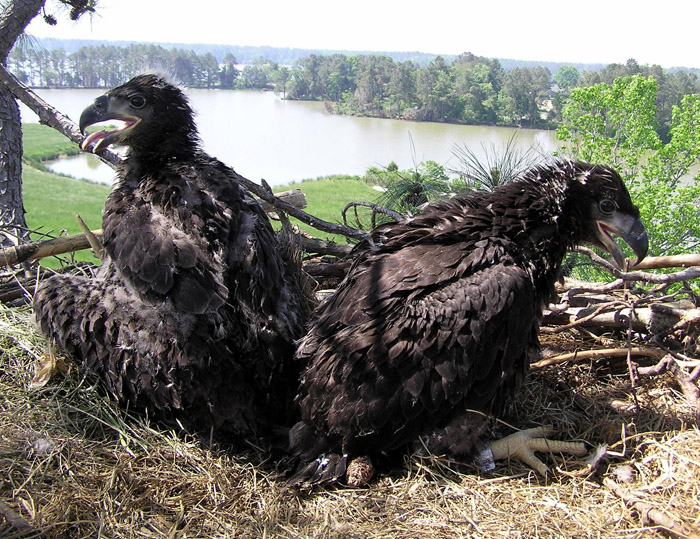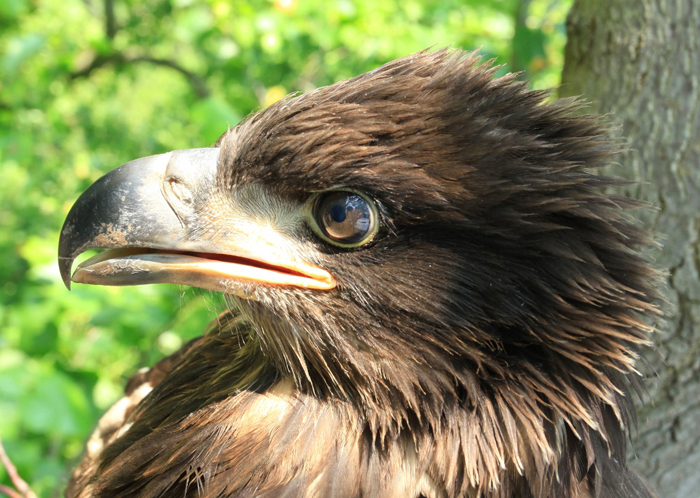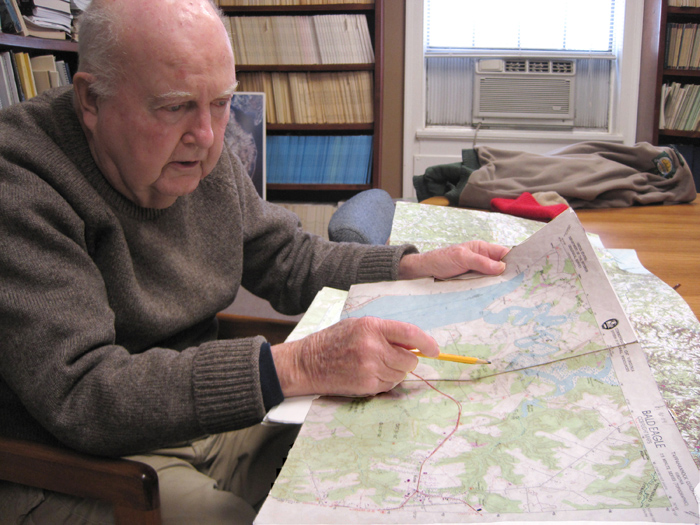Once Endangered, Bald Eagle Populations Soar

Bryan Watts is director of the Center for Conservation Biology, a joint program of the College of William & Mary and Virginia Commonwealth University. His subject in this article, Mitchell Byrd, began teaching at William & Mary in 1956 and has been active in wildlife recovery and restoration efforts ever since — he was called "a legend" more than 20 years ago, and his stature has only grown. Watts contributed this article to Live Science's Expert Voices: Op-Ed & Insights.
When Mitchell Byrd took over the annual bald-eagle survey for the state of Virginia, disco was king, the Dow Jones Industrial Average was just over 800 and France still employed the guillotine to carry out capital punishment. Byrd is now over 85, and the Bee Gees have long since gone the way of the leisure suit. But after all of these years, Mitchell's commitment to bald eagles is staying alive. With the beginning of the 2014 flight season in early March, Byrd began the 38th year of his involvement in the aerial survey.
In the four decades that he has worked on the aerial survey of Virginia's Chesapeake Bay drainage basin, Byrd has witnessed the U.S. national bird's recovery from around 30 nesting pairs to a population that may be nearing a saturation point. Eagles were just about eliminated from the bay before the insecticide DDT was banned in 1972, and Byrd began logging the bird's comeback in the region in 1977.
Since that time, biologists have learned a lot about eagles. At the Center for Conservation Biology, new technology has helped us understand the lives and movements of individual eagles at a level that was just about unimaginable 38 years ago. We've been able to deploy nest cameras to watch the birds' chick-raising habits and their family life. Technology has advanced to the point that we can track movements of individual eagles. To do so, we fit solar-powered transmitters on the birds' backs.
Since the bald eagle comeback has proven such a success in Virginia's stretch of the Chesapeake, we've been able to study these birds as a population, not just as individuals. Though individual eagles hold a great deal of interest, they are even more fascinating when you consider the raptors as a community. We've seen more than one instance of bald eagles nesting in the middle of a great blue heron rookery. Why? We're not really sure. And we don't suggest the bald eagle as a role model for human behavior: Our studies document instances of "deadbeat dads" and "cheating wives" among the populations of the United States' national bird.
We've also witnessed threats to the domestic tranquility of these birds. Raccoons are pretty bad — they can eat eagle eggs and chicks — but they're nothing like great horned owls, who will swoop into a nest, decapitate the chicks and leave, often after whitewashing the nest with their feces.
High-tech tools like satellite transmitters and nest videocams have given us a better understanding of eagle life, but the census flights remain a primary tool for keeping tabs on the population.
Get the world’s most fascinating discoveries delivered straight to your inbox.
The annual bald eagle assessment involves two rounds of flights. The first, the survey round, begins in early March and involves systematically flying over all tributaries to check nests that we've recorded from previous years. This part of the survey also includes mapping new nests constructed since the last breeding season.
We return in late April, flying what we call the productivity round. Now that we know exactly where the eagles are nesting, we fly back to each nest, counting the number of new chicks. This two-pronged survey method allows us to monitor the number of breeding pairs and get a handle on their distribution and breeding success.
Three of us have been doing these flights together for 23 years. We make a good team. An ex-fighter pilot flies the plane. Named Caton Alexander Shermer, he goes by Capt. Fuzzzo. (That's correct — Fuzzzo is spelled with three z's. He says the middle z is silent.) Byrd sits in the co-pilot seat, keeping the log and marking each nest. I'm the spotter. I sit in the back and call out the nests.
Armed with a stack of topographic maps for plotting nests, a stack of datasheets for recording survey information, and a supply of no. 2 pencils, Byrd travels through eight hours of banks, dives and pulling g's. Spotting eagles has gotten sportier. Those lazy flying days of the '70s, when nests were rare and a day's flying could be recorded on a single sheet, are long gone. The tremendous population recovery has made for intense flying days, when we set goals of checking on 100 nests before breaking for lunch.
The census surveys have gotten pretty intense since the bald eagle population has recovered. Eagles mostly eat fish, and they never nest far from water. So we fly low along the shoreline. For long stretches, we see a nest every few seconds. Even with three experienced people doing the job, we keep busy.
Experience pays off, too. Eagles tend to nest in the same places, often reusing a nest, so out of the three of us, we know when a popular nest tree is coming up. Sometimes, for reasons known only to the eagles, a tree might go without a nest for a year or two. We remember those trees, too. After flying over all those nests, we've gotten pretty good at quickly gauging the age of eagle chicks by evaluating size and plumage.
These flights involve more than just keeping track of the numbers of breeding eagles in our territory. We're always discovering something new about bald eagles. For instance, a small segment of our territory, between the Virginia towns of Jamestown and Smithfield, served as home to the earliest breeders on our beat. (In the 1980s, a pair of early birds that we called "the Christmas Eagles" nested on Jamestown Island.)
This year, we found birds raising chicks that came from eggs laid in November, a time when most eagles around here haven't even begun courtship or nest-repair activities. We don't know why birds here breed so early, or why the early birds seem to concentrate in this one short stretch of the James River. Frankly, there's a lot we don't know about the national bird, and that's why it's so important to continue the research, especially these annual census flights.
No one complains about the increased workload, especially not Byrd. Still fresh are the memories of undertaking long, heartbreaking flights without finding a single nest. For the first two years of the survey, researchers found no eagle pairs along the entire James River, from deep in the interior of Virginia to the Chesapeake Bay.
By contrast, the 2013 survey along this historic drainage documented 205 pairs that produced 267 young — and the James River is just part of the area that we fly.
For Byrd, it's been a great 38 years. It's been great for me, too, and I'm happy to say that Byrd intends to keep going up every year to count the crop of young bald eagles.
Watts's most recent Op-Ed was "Wanted: Osprey Watchers as Citizen-Scientists." The views expressed are those of the author and do not necessarily reflect the views of the publisher. This version of the article was originally published on Live Science.







